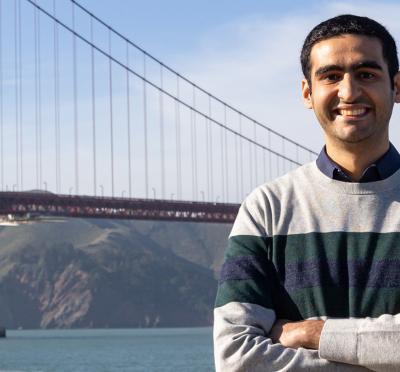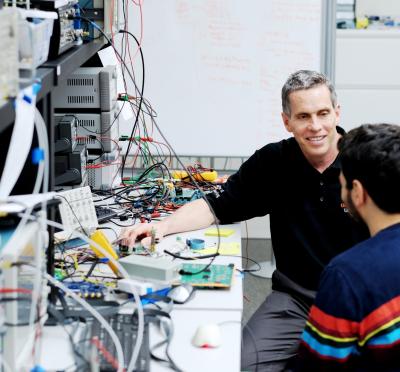
No question about it, Alex Saccente was going to study art when she went to college. Art was her passion, and she’d been painting and sketching for years. At the start of her senior year in high school, Saccente poured everything into completing her advanced placement art portfolio.
A couple of teachers at Wilsonville High School had a different idea. Recognizing their student’s aptitude for math and science, they encouraged Saccente to contemplate a future in engineering.
“The idea was way out there for me,” Saccente said. “I really like math and science; I really like solving problems, but I had never given engineering much thought.” But the wild notion took root and she started thinking about the possibility.
When she explored what the discipline had to offer and what she could offer back, Saccente quickly realized that creativity is as essential as math and problem-solving skills for successful engineers. “Engineering blends all the things that are important to me,” she said.

Saccente enrolled in the civil engineering program at Oregon State University’s College of Engineering and never looked back. Up ahead, a door was opening to another unexpected opportunity: At the start of her sophomore year, the college added an architectural engineering degree program — the first of its kind in the Pacific Northwest. Saccente didn’t hesitate to jump over to the exciting new curriculum.
Architectural engineering suits her perfectly, because it combines the structural elements of buildings (the ability to withstand the stresses of the environment) with design elements (such as lighting, acoustics, climate control, and electrical systems).
An architect designs a building, but an architectural engineer makes it work.
That’s how Saccente, now a senior and member of the Honors College, would summarize her up-and-coming major during the campus tours she led as a College of Engineering student ambassador—an activity she can’t wait to resume in a post-COVID-19 world. “I loved it,” she said. “It’s so interesting to meet prospective students from different backgrounds and share some of my experiences, and hopefully inspire them.”
She also serves as a student peer mentor for Oregon State’s STEM Leaders program, a student peer tutor for mathematics classes through the university’s TRIO program, and an officer in Phi Sigma Rho, a social sorority for women in engineering. And she’s a member of the Triathlon Club, with three triathlons under her belt.
During the summer of 2019 and 2020, Saccente completed a pair of internships. The first was at NASA’s Ames Research Center in Mountain View, California, where she and a team of a dozen students from across the country customized the capabilities of multicopter drones. “I worked a lot on the math and physics needed to design the user interface,” Saccente said. “It was all very new to me, but it was one of my favorite experiences.”
Though the work itself was unrelated to her major, Saccente acquired skills she knew would come in handy: software coding, research techniques, communication skills, teamwork, and technical paper writing. In fact, she and her colleagues wrote a paper based on their drone research and presented it at the 2020 American Institute of Aeronautics and Astronautics forum. “That experience gave me a solid understanding of how to go about writing my honors college thesis,” she said.
Her second internship, done remotely because of COVID-19, was with the TallWood Design Institute through Oregon State’s College of Forestry, where the institute is based. TallWood is an industry-academic collaboration established to drive research and education about advanced timber products manufacturing, design, and construction. Saccente compiled an online database about mass timber structural fire engineering research for the institute’s website.
This past summer, she completed a third internship — also virtual — with the National Science Foundation’s Natural Hazards Engineering Research Infrastructure at the University of California, San Diego. Saccente’s work included research associated with the facility’s large, outdoor shake table, which simulates ground motion during an earthquake and is used to model the structural resiliency of buildings when subjected to vigorous shaking.
After graduating, Saccente plans to pursue advanced engineering degrees and conduct research into the design and construction of earthquake-resilient buildings. “I took a class about earthquakes, and it completely fascinated me,” she said. “Our infrastructure is not ready, and the research possibilities in earthquake-related engineering are endless.”
Now, several years removed from a time when engineering didn’t even register in her plans, Saccente marvels at the good fortune that followed. “I didn’t know what awaited me when I chose to major in engineering, but it turned out to be the best decision of all,” she said. “I couldn’t have imagined all of the experiences that would come, and it all started because I decided to step out of my comfort zone.”



